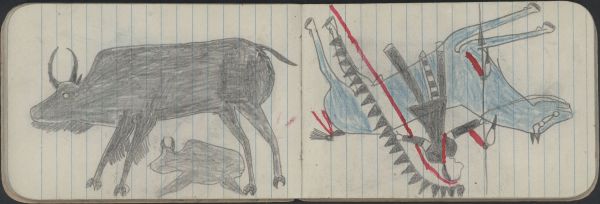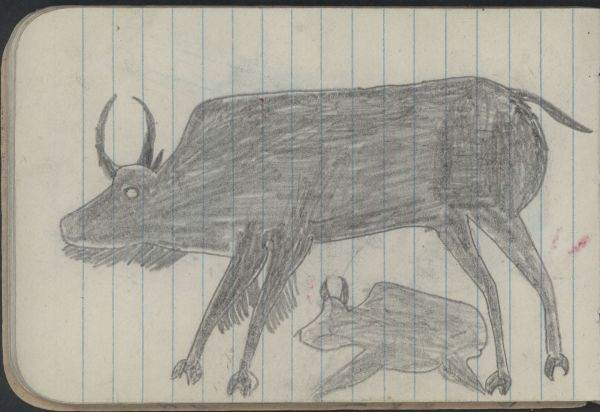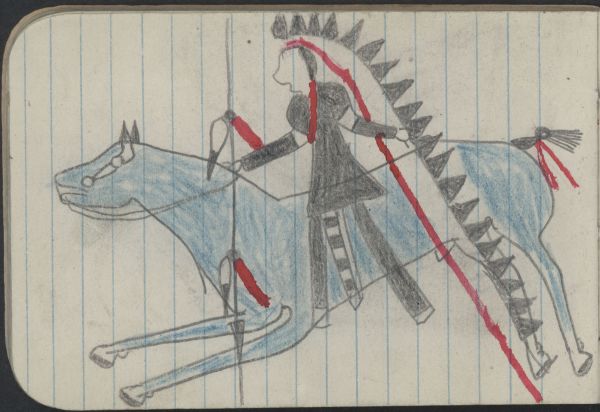ANIMALS, BUFFALO: Female Buffalo and Calf; WAR, WARRIOR: Man on Blue Horse Carries a Lance
Ethnographic Notes
26 Buffalo mother and calf with splayed legs face left. This could indicate the calf is newborn, still on the ground, or in motion. The female�s body is pencil fill, with detailing of split hooves, horns, tail shaggy beard and forelegs also done in pencil. The eye is an unfilled circle, with the white area contrasting to the gray hide. The calf is outlined and filled with all pencil, as well. This is one of eight nearly identical drawings in this ledger with a buffalo female and calf: Plates 11-18. For further discussion, see plate 11. 27 A warrior on a blue horse wears a single-trail full eagle bonnet, edged with red cloth, identical to the headdress in PILA Plates (Plates 9, 10, 13-15, 17, 26-34, 36). He wears a gray cloth shirt and gray breechclout. German silver armbands are above the elbows. The alternating blocks of black-and-white beadwork that edge his leggings are �old� and �sacred� (Powell, Sacred Mountain: 564); this design appears often on war shirts and leggings (Lanford, 2003: 153, Fig. 15; Cowdrey, 1999: 209). This warrior carries a lance with red cloth and two eagle feather tied individually below the middle of the shaft and repeated above the middle of the shaft. The immature golden eagle feathers are attached to the lance along with �whorls� or �ruffs� made of clipped feather and red cloth. The lance, pointing downward, has a large metal tip.The horse's tail is clubbed with red cloth, indicating preparation for war. It wears a silver or German silver headstall (Kahn, 2003: 72, 81). Peabody Museum at Harvard University mounted a 2013 exhibit about an 1860s Lakota ledger captured by the U.S. Army after the defeat of Custer at Greasy Grass. Co-curators Castle McLaughlin and Butch Thunder Hawk wrote this about the blue horses depicted in that ledger: �Lakotas favored blue roans as war horses, as their color indicated the strength and speed of the sky powers.� Some of the 1879 Dodge City men who created these drawings were Lakota or close allies of Lakotas. Contemporary Nokota horses descend from these horses: �The Nokota horses of North Dakota are descended in part from animals that Sitting Bull and other Lakotas surrendered to the U.S. military at Fort Burod in 1880. Although blue roan is a rare color, it is still dominant among Nokota horses� (McLaughlin and Thunder Hawk). Media: Lead pencil, blue crayon, red water color


